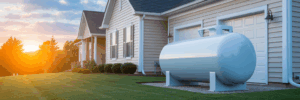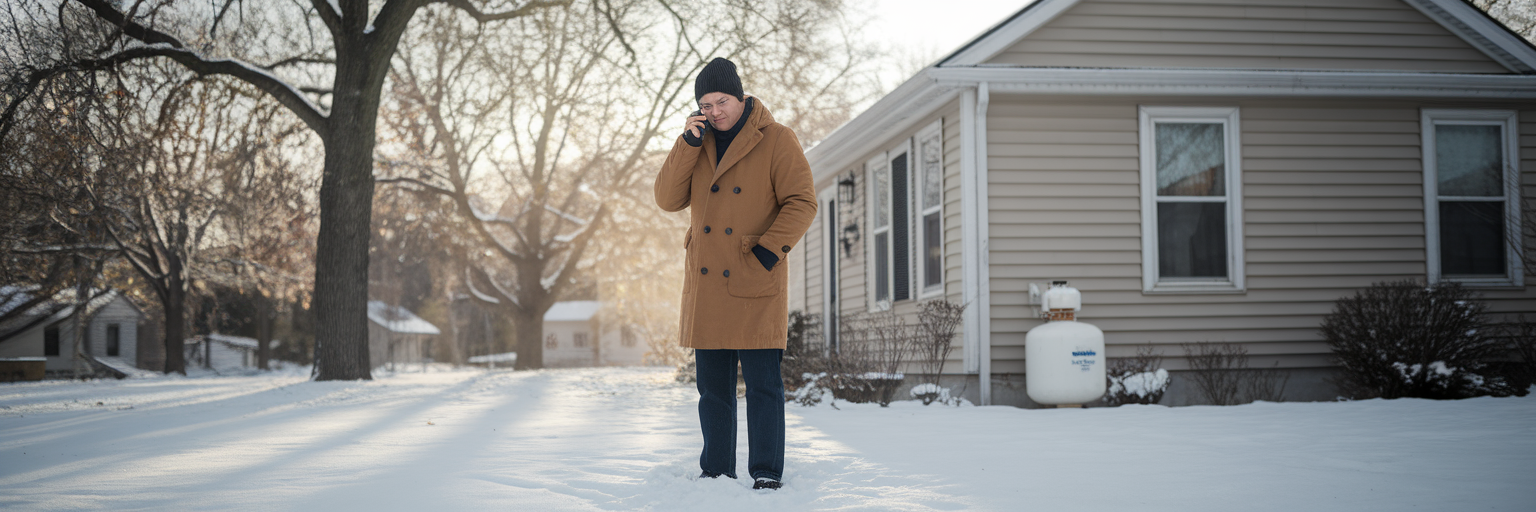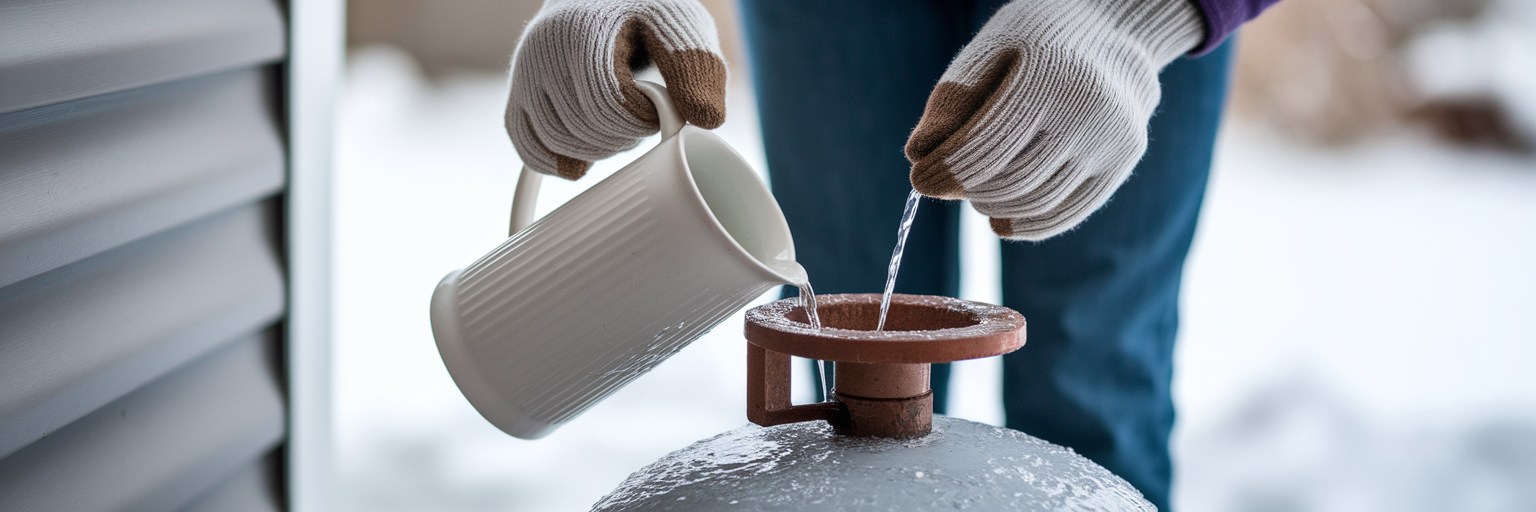
As the temperature drops, the familiar hum of the furnace kicking on brings a sense of comfort. For millions of homeowners, that warmth is powered by propane. While it’s a reliable and efficient fuel, the winter months introduce unique conditions that require attention. A few simple preparations can ensure your system operates safely and dependably all season long, giving you peace of mind when you need it most.
Preparing Your Propane Tank for Cold Weather
The foundation of a safe winter begins with proper propane tank winter care. Before the first heavy snowfall, taking a few proactive steps can prevent major headaches later. Think of it as winterizing your home; your propane tank deserves the same attention.
First, clear a path to your tank. This isn’t just for your own convenience. In an emergency, first responders need immediate access. A clear, wide path also ensures your delivery driver can reach the tank safely and efficiently, preventing delays in your refill schedule. Heavy snow or ice can make a routine delivery impossible.
When snow does accumulate on the tank itself, remove it gently with a broom. Never use a shovel or other sharp tools, as you could easily damage the tank, valves, or fittings. The goal is to keep regulators and vents free from ice and snow, which can interfere with proper operation. A buried tank is a hidden hazard.
It’s also critical to keep an eye on your fuel gauge. We recommend calling for a refill when your tank reaches 30%. This buffer protects you from unexpected cold snaps or delivery delays caused by winter storms. For homeowners looking for reliable residential propane services, it’s wise to partner with a trusted supplier who can ensure timely refills. Running out of propane is more than an inconvenience; it’s a safety issue that requires a professional to restart your system.
Recognizing and Responding to a Propane Leak
One of the most important winter propane safety tips is knowing how to recognize and react to a potential leak. Propane is naturally odorless, so a chemical with a distinct “rotten egg” or skunk-like smell is added for safety. If you detect this odor, you must act immediately. Knowing how to check for a propane leak visually or audibly (a hissing sound near the tank) is helpful, but the smell is your primary alert. Follow these steps without hesitation.
- No Flames, No Sparks. Immediately extinguish all open flames, including cigarettes and candles. Do not touch light switches, use telephones, or operate any electronics. A tiny spark can ignite propane in the air.
- Leave Immediately. Get everyone out of the building or area. Don’t waste time gathering personal items. Your priority is getting to a safe location.
- Shut Off the Gas (If Safe). If you can safely reach the main gas supply valve on your propane tank, turn it off. This is typically a handwheel or lever. Turn it clockwise to close it. However, if you hear a hissing sound, see vapor clouds, or have any doubt about your safety, skip this step and evacuate.
- Call for Help from a Distance. Once you are a safe distance away from the potential leak, use a cell phone or a neighbor’s phone to call your propane supplier’s emergency number and 911. Do not return to the building until a qualified technician has declared it safe.
This protocol is designed to protect you and your family. For more comprehensive information on propane safety protocols and best practices, our detailed safety page is an essential resource.
Safe Practices for Indoor Propane Appliances
While the tank sits outside, the appliances inside your home are where you experience the benefits of propane. Ensuring they run safely is just as important as tank maintenance. The most critical step is scheduling an annual service for your propane furnace, water heater, and other appliances by a qualified technician. This inspection not only ensures efficiency but also helps prevent the risk of carbon monoxide (CO) exposure.
Pay attention to how your appliances are performing. Small changes can indicate a problem that needs professional attention. Knowing the difference between normal operation and a warning sign is key. Ensuring your home is fitted with reliable and properly installed propane equipment is a key part of long-term safety.
| Appliance Feature | Healthy Sign (Normal Operation) | Warning Sign (Requires Professional Service) |
|---|---|---|
| Flame Color | Consistent blue flame | Yellow or orange flames, or high flames |
| Appliance Surface | Clean and free of residue | Soot stains or buildup on or around the unit |
| Ambient Air | No unusual smells | Persistent, unpleasant odors |
| Operation | Quiet, consistent performance | Loud or unusual noises during startup or operation |
Note: This table provides general indicators. Any deviation from normal operation should be inspected by a qualified technician to ensure safety and efficiency.
A carbon monoxide detector is a non-negotiable safety device in any home with fuel-burning appliances. As the U.S. Consumer Product Safety Commission recommends, you should have CO detectors on every level of your home and outside sleeping areas. Test them monthly and replace the batteries annually. Finally, be strict about portable appliance use. Propane generators must always be operated outdoors, at least 20 feet away from doors and windows. Any portable indoor heaters must be specifically designed for indoor use and equipped with safety features like an oxygen depletion sensor.
Handling Common Winter Propane Issues
Beyond major emergencies, winter can bring a few common operational hiccups. Knowing how to handle them safely can save you a service call. One frequent issue is a frozen regulator. The regulator is a device on your tank that controls the flow of propane to your home; if it freezes, it can disrupt your fuel supply.
A safe frozen propane regulator fix is simple: gently pour warm water over the regulator. Never use a blowtorch, open flame, or any kind of heat gun. Also, do not try to chip away at the ice or hit the regulator, as this can cause serious damage. If warm water doesn’t solve the problem, it’s time to call a professional.
Another question homeowners have is what to do if propane runs out. Running out of fuel is more than just an inconvenience. When a tank is empty, air and moisture can enter the lines, which creates a potential safety hazard. For this reason, a qualified technician must perform a leak check on your entire system before the gas can be turned back on. The best solution is prevention: keep your tank above 30% and get on a regular delivery schedule.
Finally, remember to keep appliance vents clear. Snow, ice, or even a bird’s nest can block the vents for your furnace or water heater. A blocked vent can cause a buildup of carbon monoxide inside your home, so make it a habit to check them after every snowfall.
Building Your Family’s Emergency Plan
All the knowledge in the world is only useful if it’s put into a plan. Turning these safety tips into a clear family protocol is the final step to a worry-free winter. A simple home propane safety checklist ensures everyone in your household knows what to do in an emergency. Communication and practice are essential.
Your family’s plan should include:
- Teaching everyone the smell of propane. Make sure every family member can identify the “rotten egg” odor and knows it signals danger.
- Practicing an evacuation route. Have a designated meeting spot a safe distance from your home.
- Knowing the shut-off valve location. All adults in the household should know where the main gas shut-off valve is and how to turn it off if it is safe to do so.
- Posting emergency numbers. Make sure your propane supplier’s emergency number is saved and accessible; you can find our contact information here for any questions or service needs. Post it on the refrigerator or another visible location.
- Informing outside help. If you use a snow removal service or have other contractors working on your property, inform them of the tank’s location to prevent accidental damage.
By taking these preparatory steps and ensuring everyone is informed, you can confidently enjoy the warmth and comfort your propane system provides all winter long.
About Jennifer Whitaker
Propane industry expert and content contributor for MyPropane.com.
View all posts by Jennifer Whitaker →Related Articles

Five Common Propane Tank Maintenance Mistakes to Avoid
Nov 21, 2025 • 7 min read
This article details five frequent errors in propane tank care and provides simple steps to prevent them.

Your Guide to Home Energy Savings with Propane
Oct 27, 2025 • 6 min read
Understand how to lower your utility bills by using propane more effectively in your home.

